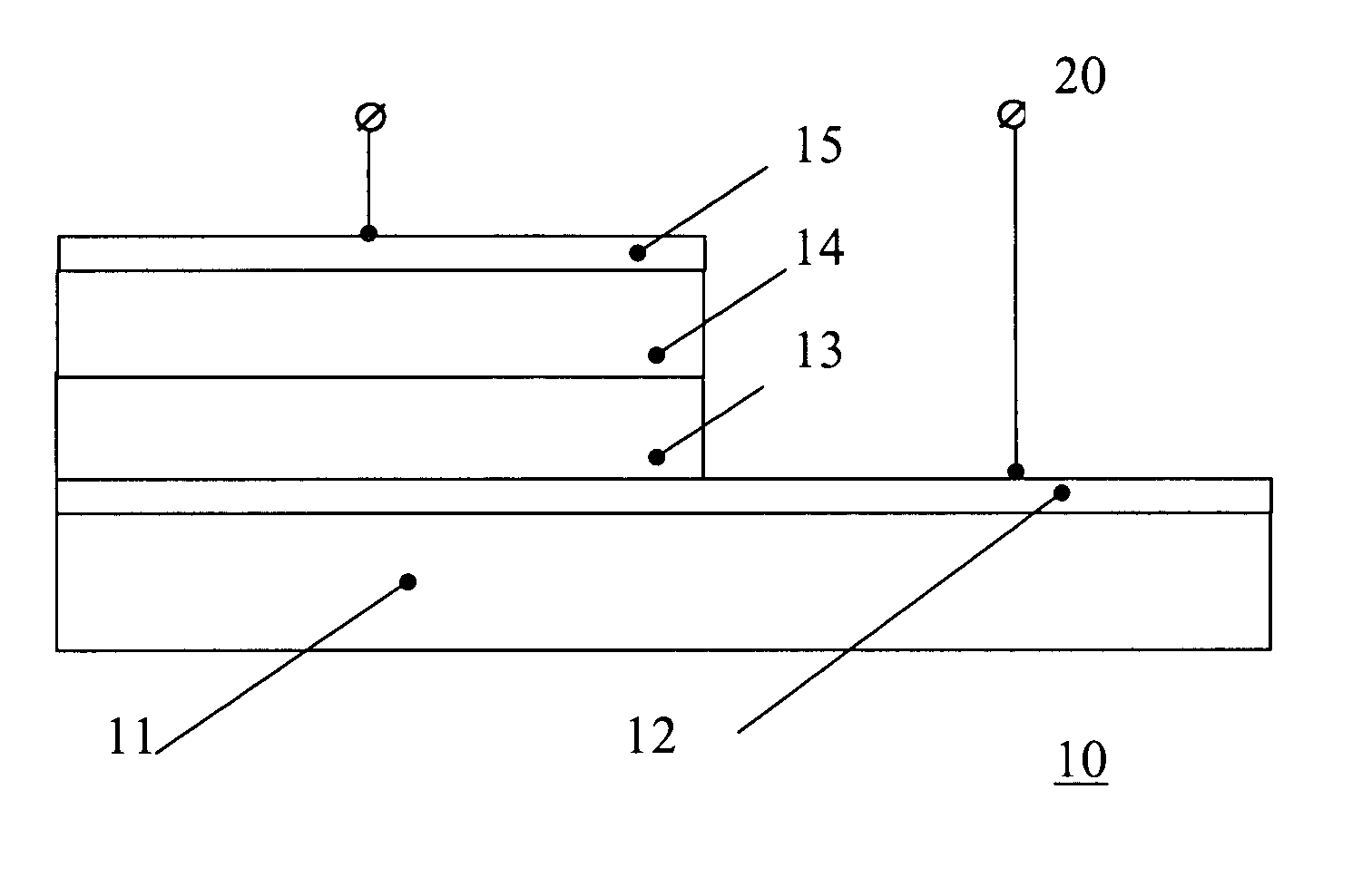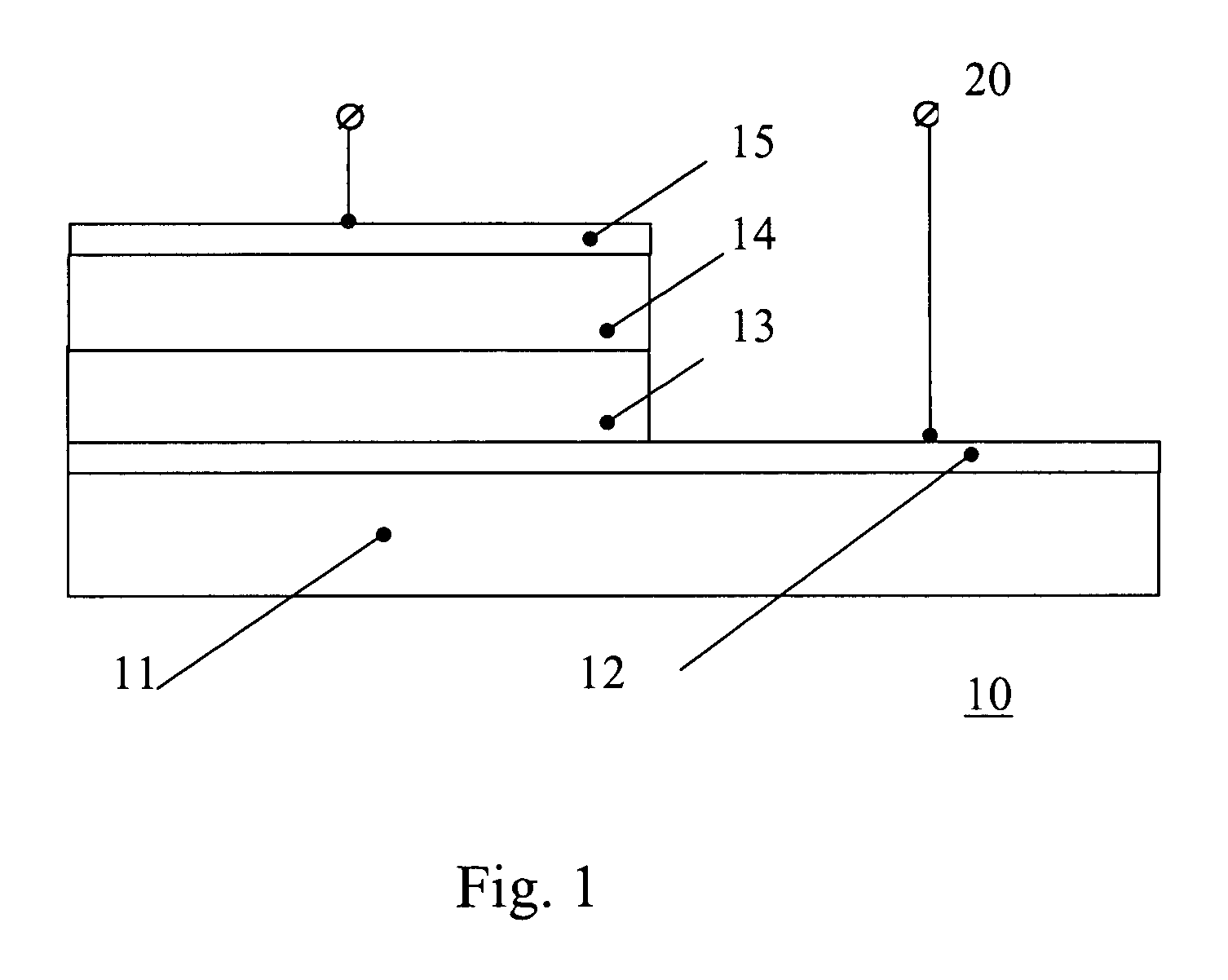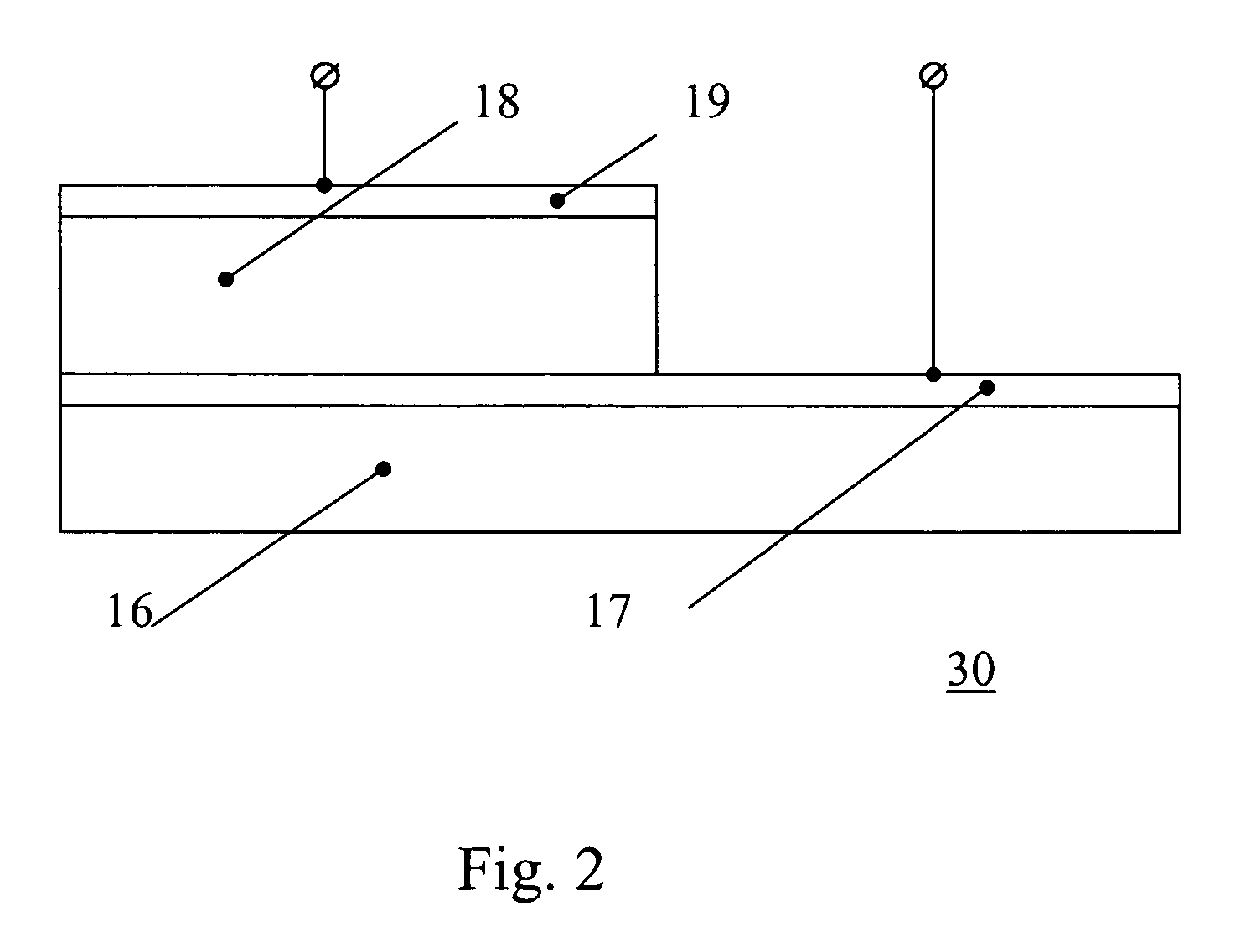Organic semiconductor diode
a semiconductor diode and organic technology, applied in the field of organic semiconductor diodes, can solve the problems of low electric conductivity value of organic compounds used in said diodes, relatively expensive production process, and low cost advantage of vacuum processes
- Summary
- Abstract
- Description
- Claims
- Application Information
AI Technical Summary
Benefits of technology
Problems solved by technology
Method used
Image
Examples
example 1
[0121]The organic semiconductor diodes with the p-n junction were prepared as follows. Thin films of materials specified below were sequentially applied onto a glass substrate. First, an ITO film with a thickness of 1100 Å was formed by vacuum deposition at a pressure of 5.0×10−6 Torr to serve as the anode. Then, a thin film of a sulfoderivative of copper phthalocyanines with the structural formula XXIV was formed on the ITO layer by method of Cascade Crystallization Process to serve as the hole transport layer. The thickness of this layer was 0.3 μm. Next, a thin film of a perylene derivative with the formula (Ia) was formed over the hole transport layer by method of Cascade Crystallization Process to serve as the electron transport layer. The thickness of the electron transport layer was also 0.3 μm. Further, a thin film of lithium oxide (LiO2) was deposited onto the electron transport layer at a rate of 1 Å / sec to serve as the cathode. The LiO2 layer thickness was 0.5 nm. Finally...
example 2
[0122]The organic semiconductor diode with the p-n junction was prepared similarly to the diode described in Example 1, except that perylene derivatives represented by the formula (Va)
[0123]
was used as material for the electron transport layer.
example 3
[0124]The organic semiconductor diode with the p-n junction was prepared similarly to the diode described in Example 1, except that perylene derivatives represented by the formula (Vb)
[0125]
was used as material for the electron transport layer.
PUM
 Login to View More
Login to View More Abstract
Description
Claims
Application Information
 Login to View More
Login to View More - R&D
- Intellectual Property
- Life Sciences
- Materials
- Tech Scout
- Unparalleled Data Quality
- Higher Quality Content
- 60% Fewer Hallucinations
Browse by: Latest US Patents, China's latest patents, Technical Efficacy Thesaurus, Application Domain, Technology Topic, Popular Technical Reports.
© 2025 PatSnap. All rights reserved.Legal|Privacy policy|Modern Slavery Act Transparency Statement|Sitemap|About US| Contact US: help@patsnap.com



